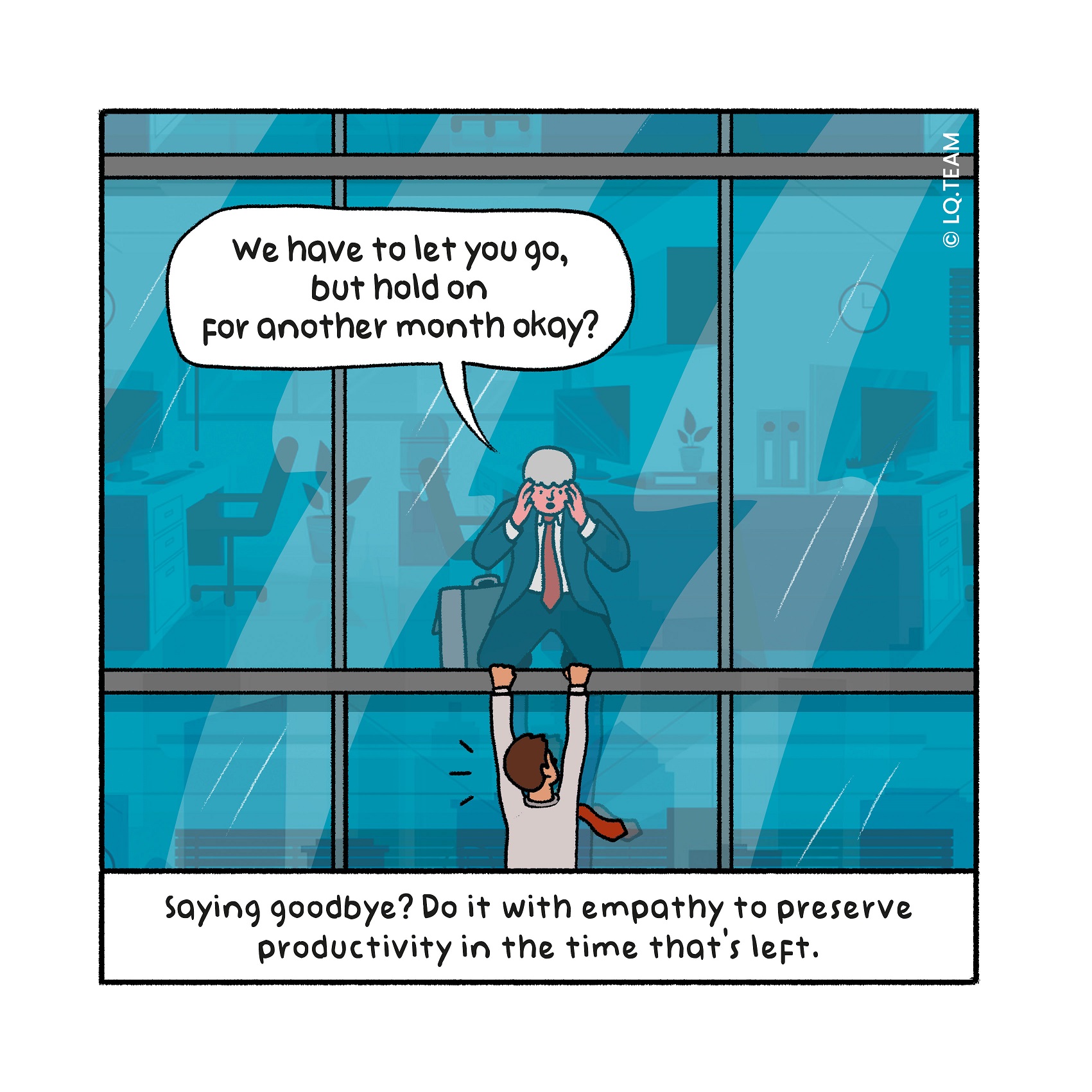
Nut to crack: How do you respectfully say goodbye while preserving the productivity of those same individuals over the coming months?
Saying goodbye to colleagues in the context of a reorganisation usually re- quires a significant effort from change leaders.
Change leaders conduct difficult conversations supported by change en- ablers. If the moment of the announcement and their departure are far apart, this is even more difficult. How do you then keep the motivation of the individ- ual and the productivity going? The question that arises is, therefore: how do you respectfully say goodbye, while you safeguard performance, especially if the moments of announcement and departure are far apart?
Nutcracker: Sincere interest, precise framing
If you are the one who has to say goodbye to an employee, it is important to be empathic in the conversation while at the same time being clear about the content. The interview protocol in the support tool guides a notification conversation. The example shows concretely how to conduct such a con- versation properly and how to steer the conversation towards what actually can be influenced by you and the employee – a respectful exit and a proper handover.
Support tool: Conversation protocol
The conversation protocol below helps to announce clearly and with empathy the consequences of a reorganisation to the individual employee affected. The most important lesson here is: let go of your expectations about how the other person will react and stay in the moment, experiencing the actual reaction of that other person.
A notification meeting typically lasts only a short time, say 15 to 30 minutes. Afterwards, of course, a more extended conversation can follow.
Start with establishing contact for the first minute, then spend the next few minutes briefly explaining the why of this conversation and its purpose.
Then discuss why the organisational structure change took place, the implica- tions for the department where the employee works, and the consequences for the employee’s role and, therefore, for the employee personally. Use a maximum of five minutes for this.
Then stop talking. Provide room for the other person’s reaction, initial ques- tions and emotions. That’s the heart of the conversation. Stay in the moment. Listen. Address the emotion. Create clarity. This typically takes around ten minutes.
Subsequently, explain the next steps. Give them a letter that states everything in writing, and conclude the conversation. Potentially arrange a follow-up meeting when the other person has had time to process things, which is usually a day or two later.
Real-life example: Appreciation until the final day
In the context of a merger, it has been decided that part of the administration will be out sourced. As a result, a department manager must cut 40 jobs. How does he respectfully say goodbye to his colleagues, while simultaneously ensuring that they stay committed for another four months and carefully transfer the work to the party that will take over the administrative work?
What he does is the following. He conducts oneonone conversations. During these conversations, he clarifies that the decision is irreversible and not their fault. He offers space for emotion.
He then focuses on what can be influenced by himself and the employee: a clean exit and a good transition to new work. He explains how assistance with finding a new role can take shape and how the organisation can support the employee in this regard. He also paints a clear picture of a good handover: the employee carries out the work until the person from the external party to whom the handover can be made is in the picture. At that moment, the employee works closely together with this person for two weeks, then hands over the work and remains available for questions for another two weeks before the handover is done.
By giving employees a clear responsibility for a proper handover while at the same time providing support in their transition to new work, you prove appreciation for the contribution of the employee right up to the last day and, at the same time, keep the focus on work.
Tip for change leader
If you want to show commitment to an employee who is leaving, and at the same time want to use the knowledge of this employee for the organisation, it helps to ask the employee to write a handover document. Ask for a maximum of three pages: one with information about what the employee is proud of and what they have achieved in the role, one with activities that the employee hopes colleagues will soon take over because things might go wrong if not (and so may be concerned about), and one with topics or activities where the employee would have liked to have made a difference or seen a change, but where they hit a brick wall or where this did not otherwise work out. Then you start a conversation about this. Result: the employee offers this piece of processing and reflection, and they feel heard. You have a much deeper knowledge of the impact and risks of the individual’s departure.
Tip for change enabler
Define a crystalclear process from organisational structure decisionmaking, to noti fication, to succession: who makes which choice when, and who speaks when, with whom, about what, and in what way. Ensure you have sensechecked the process with hr/Legal so you are compliant with employment regulations. Take control of this process and plan it in detail with realistic timelines. The process guides all those involved when the outcome is uncertain and creates a sense of quality for the recipient. See Challenge 30 for more information.
Kernel: Humanity and respect
How you approach saying goodbye and letting people go makes a difference to individuals and the organisation. By acting respectfully with an eye for the interests of both parties, you preserve achievements and create ambassadors for life.
